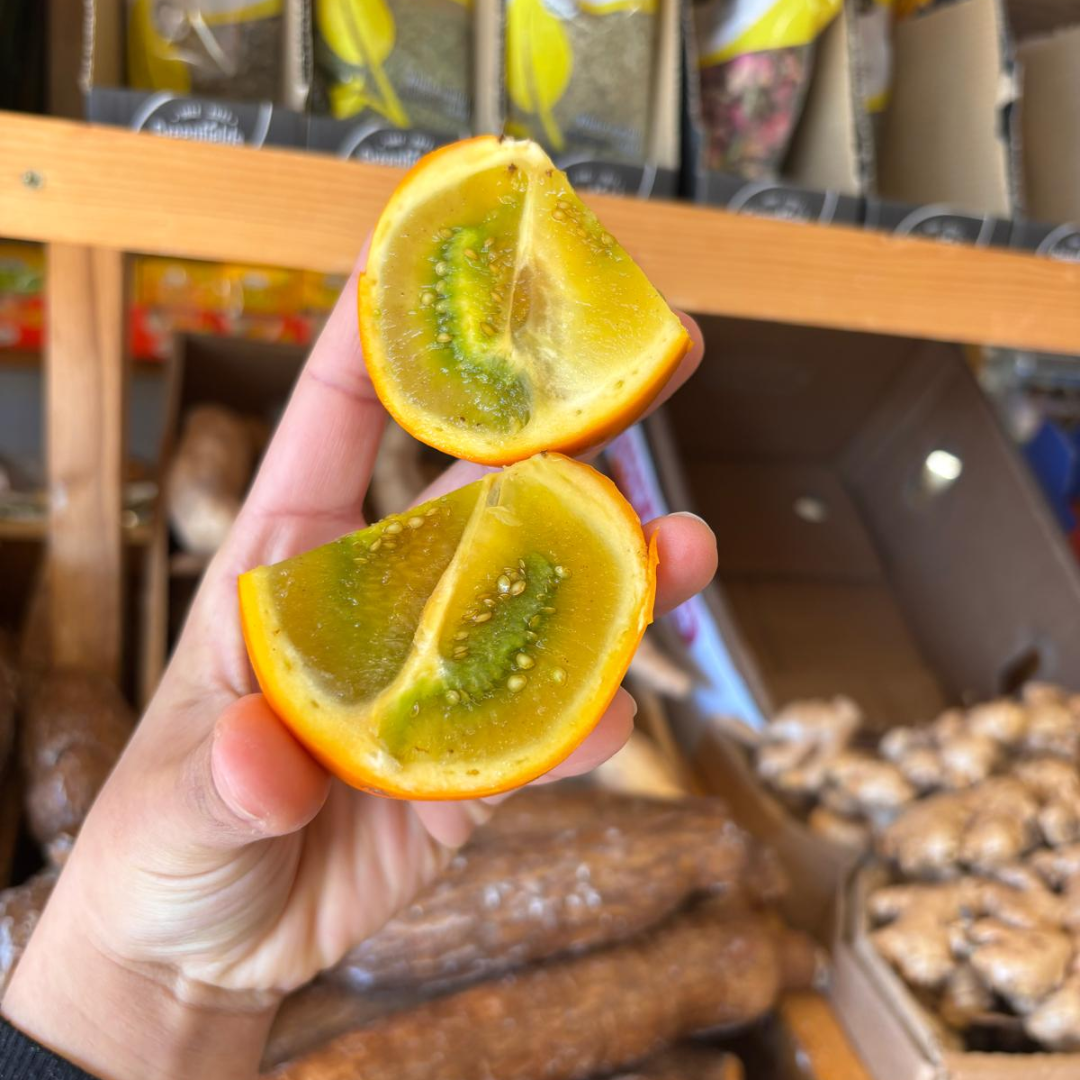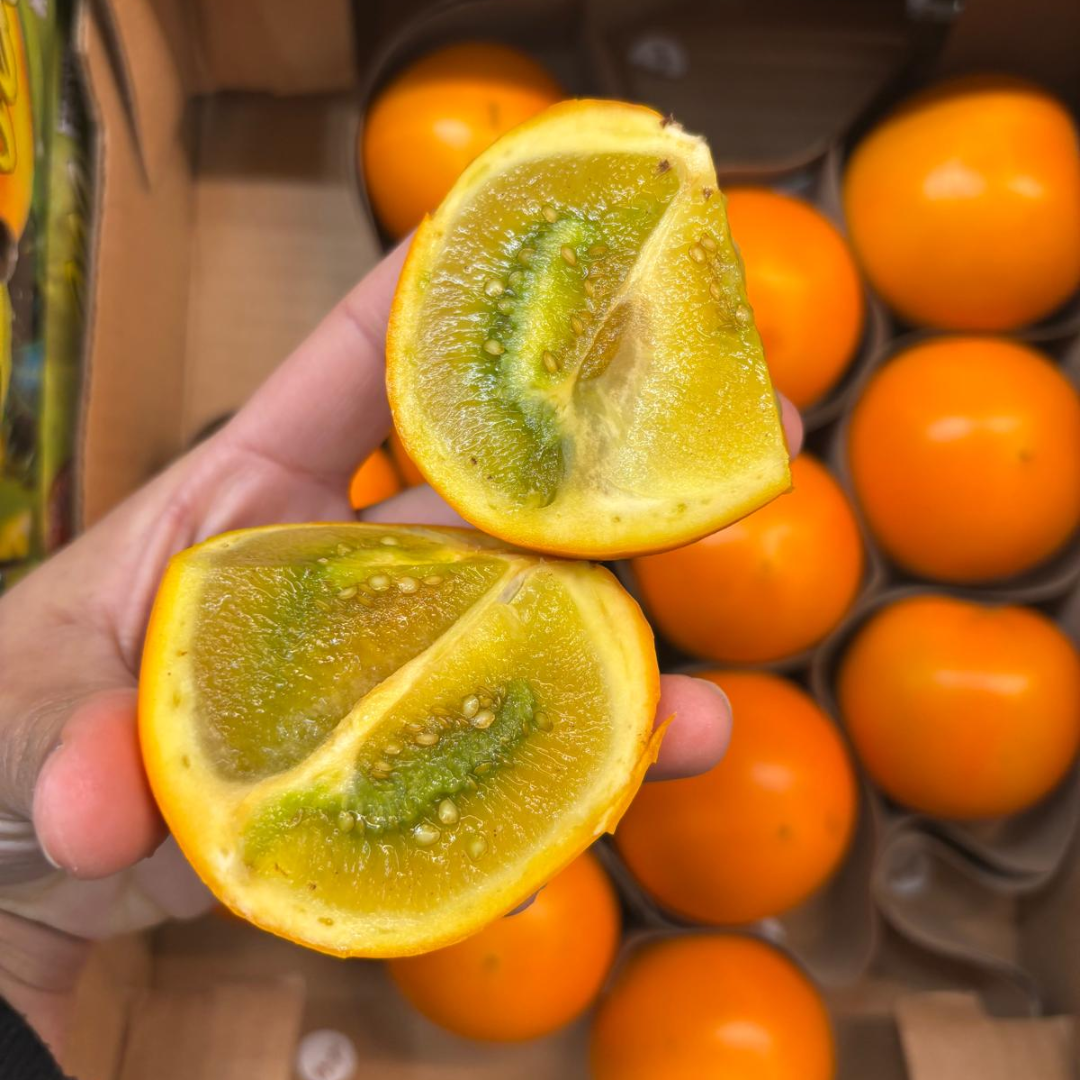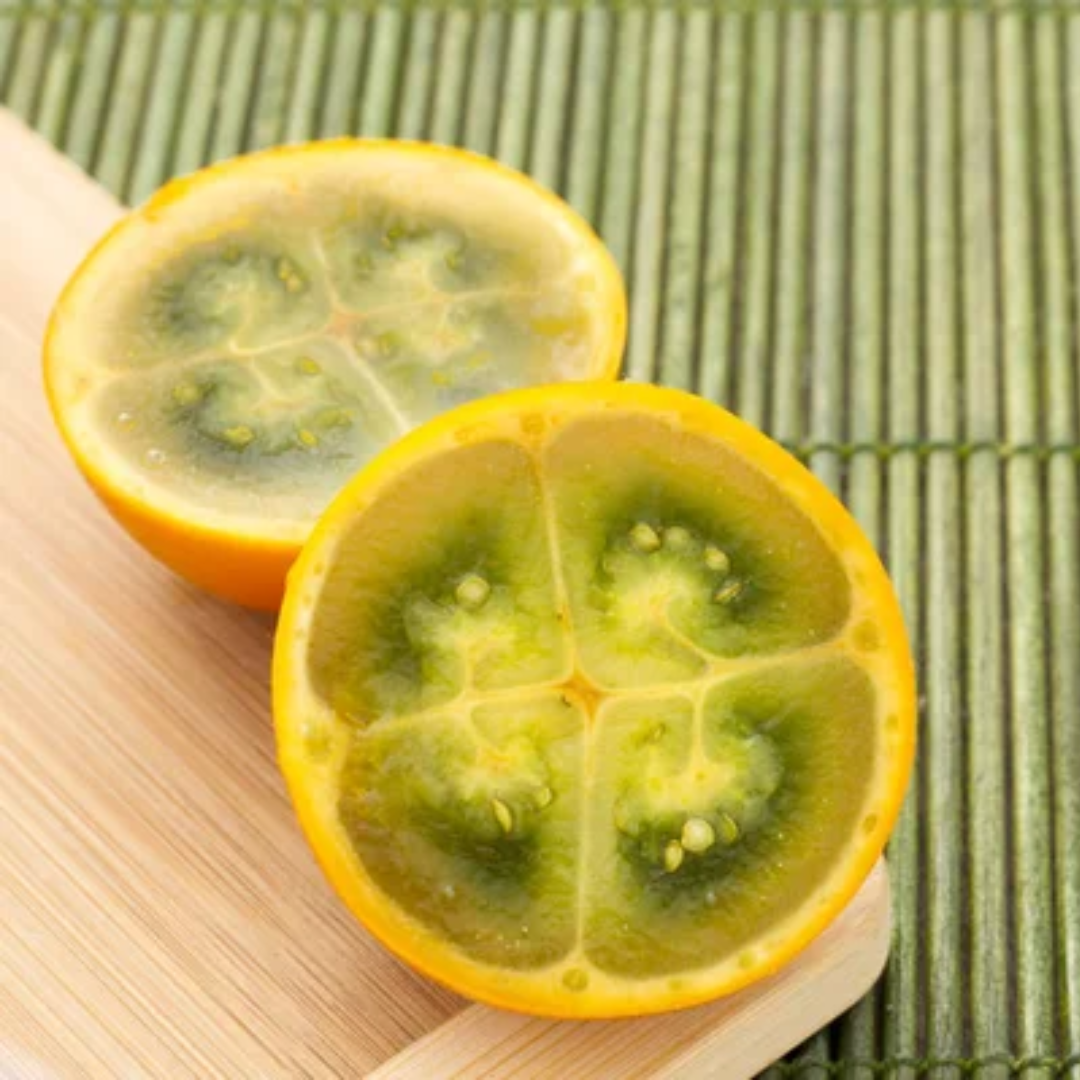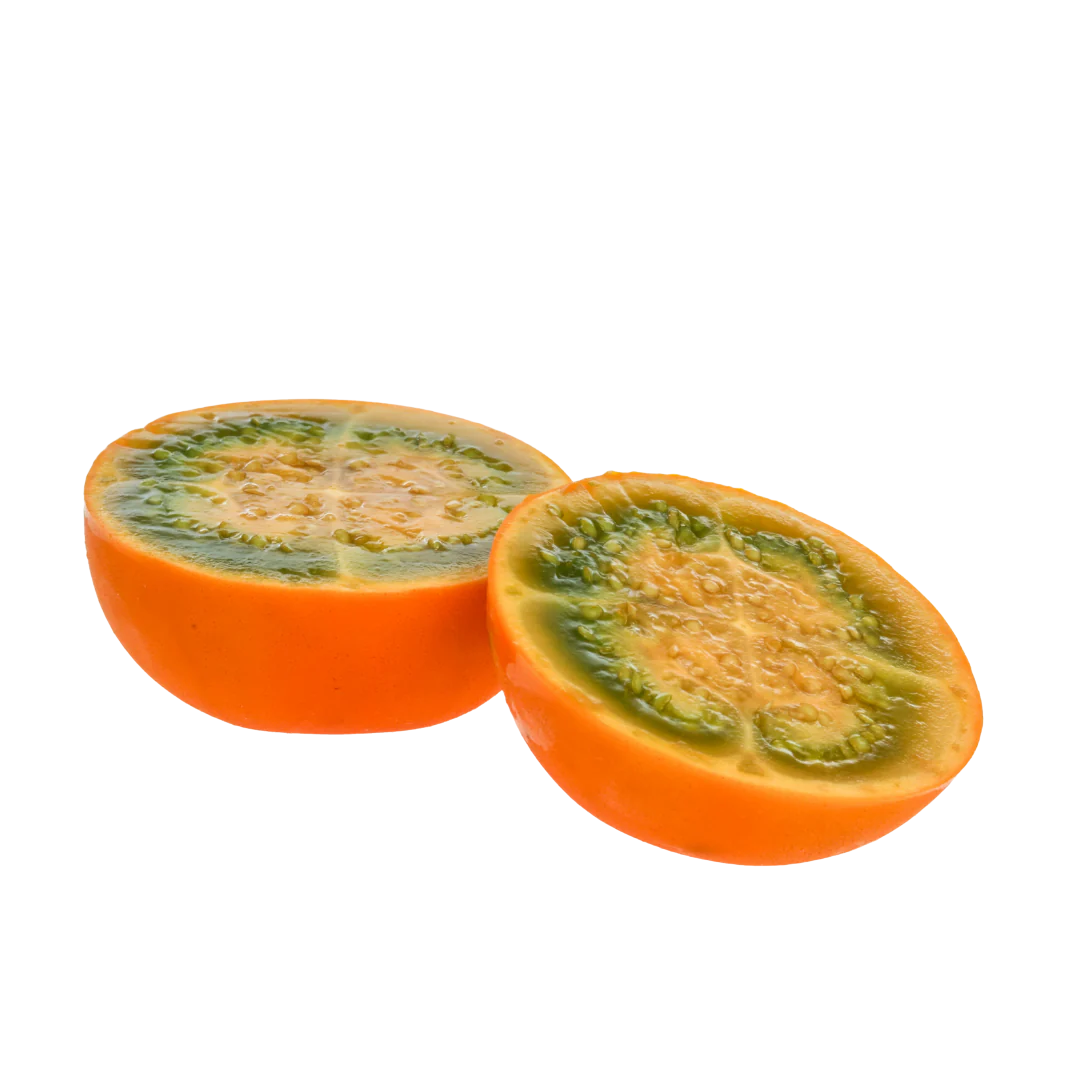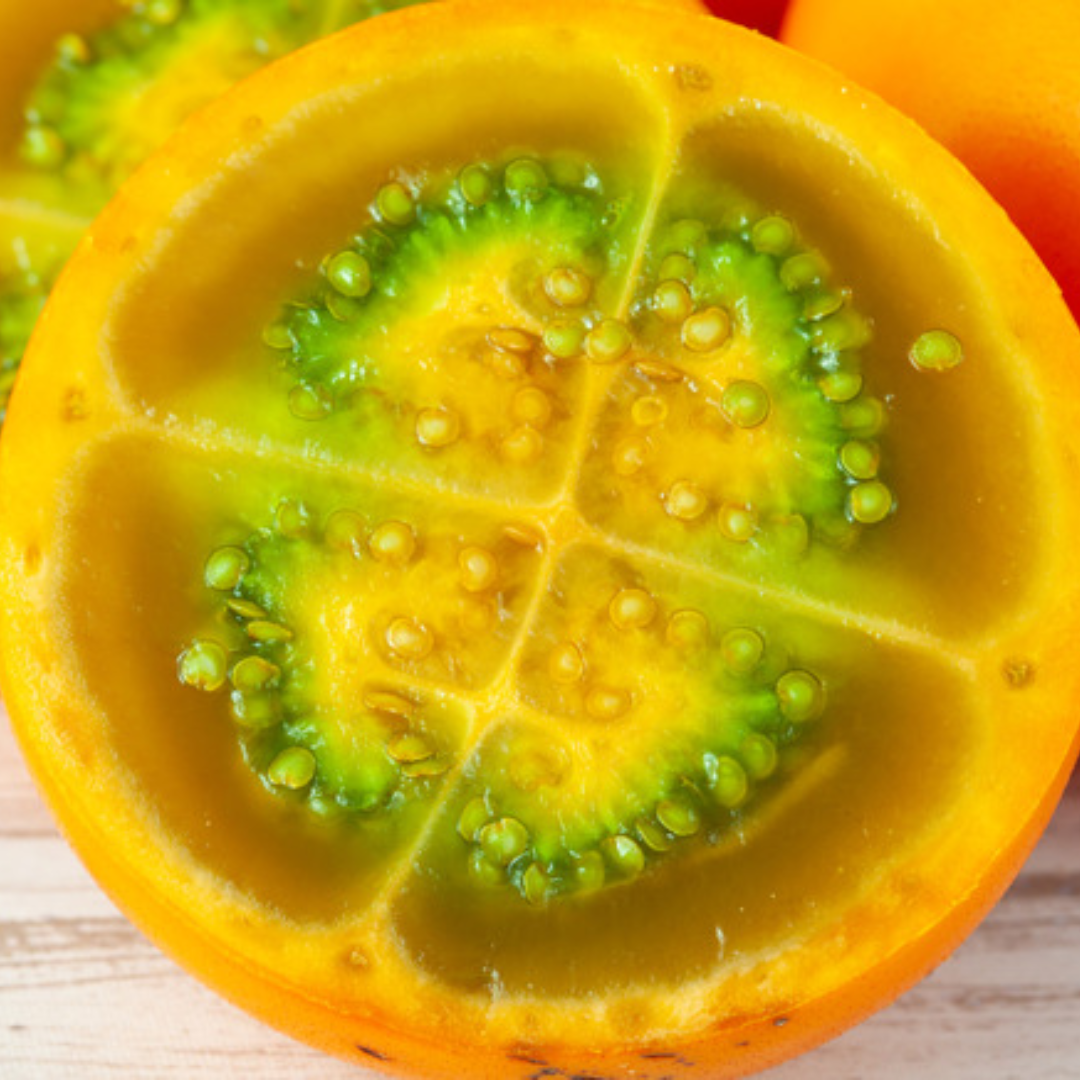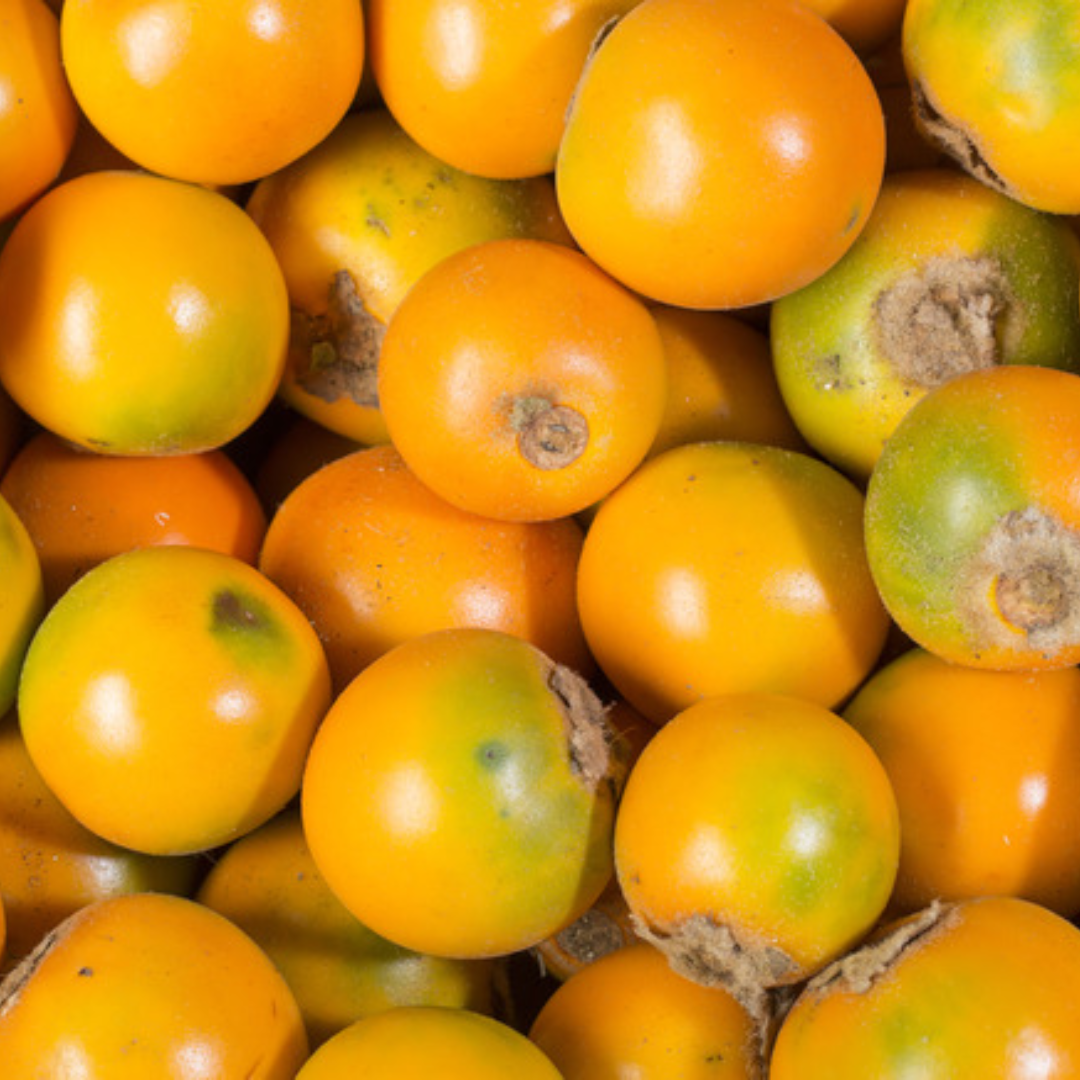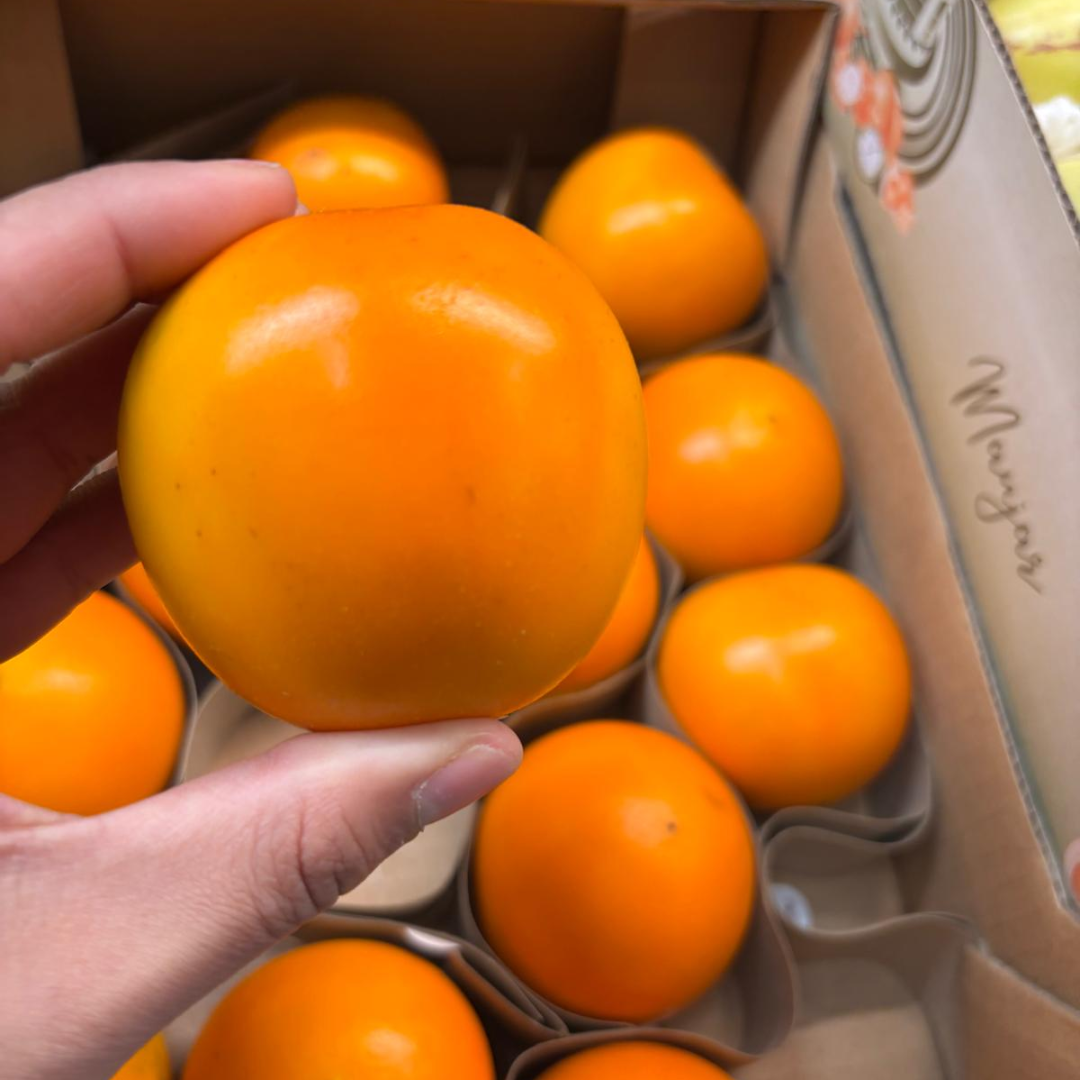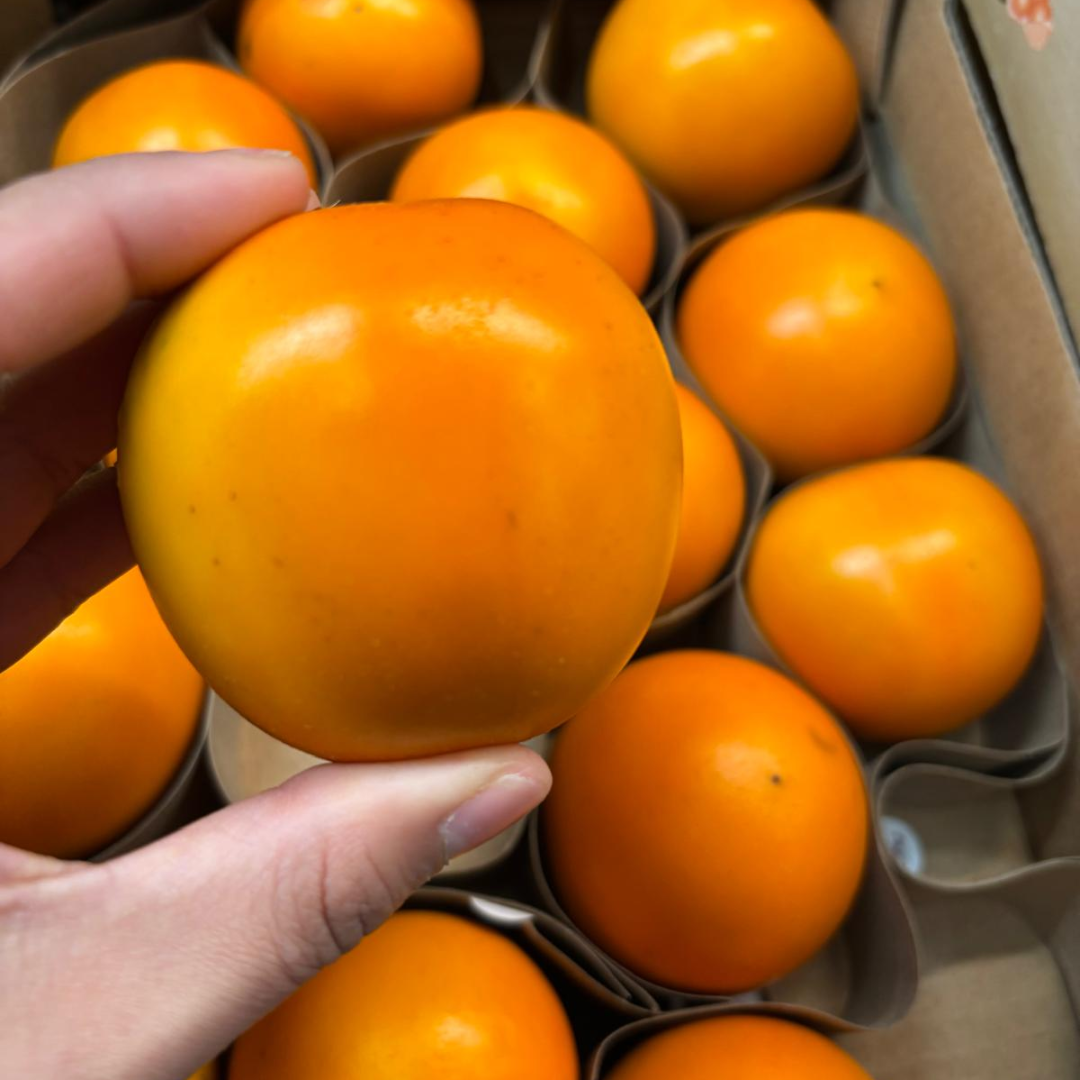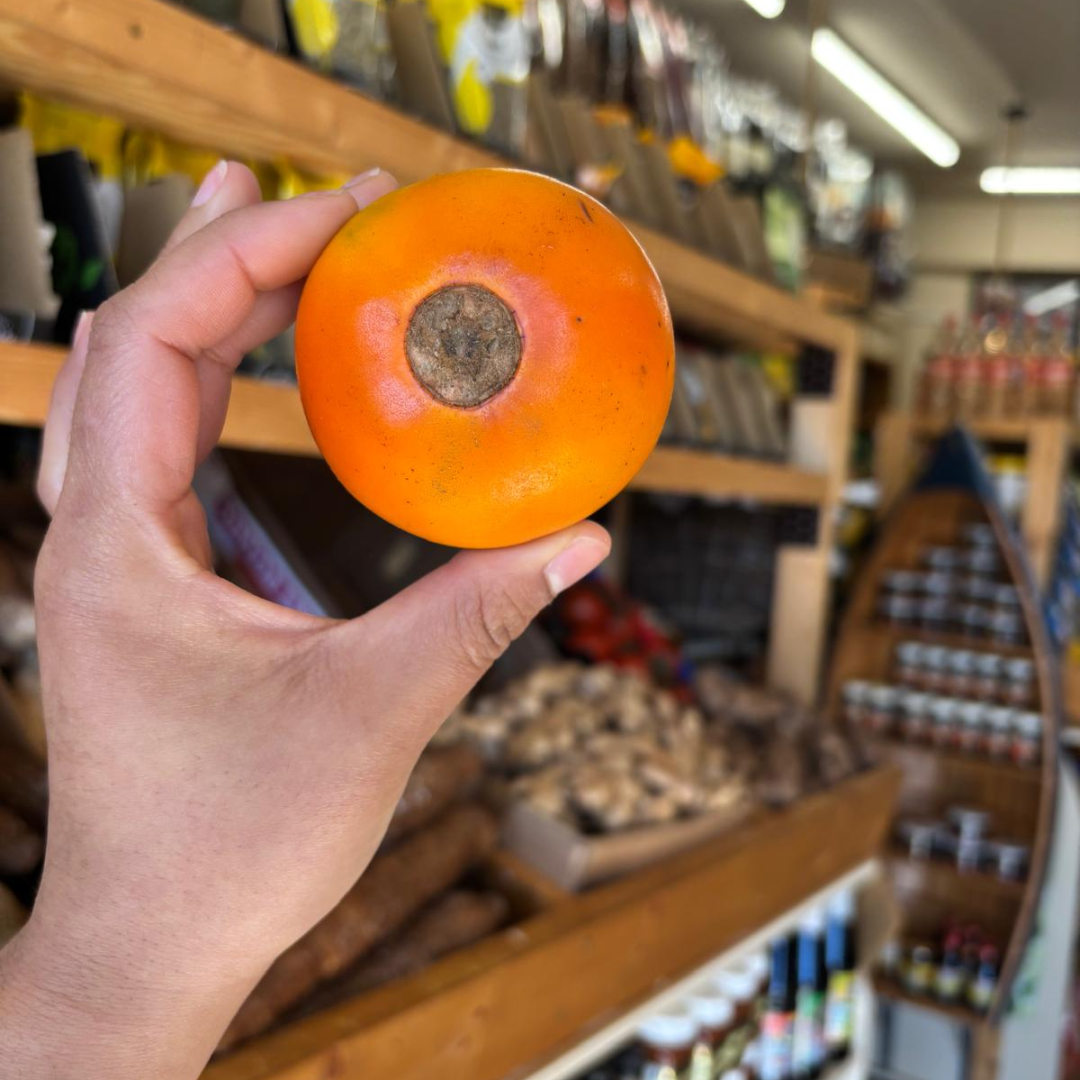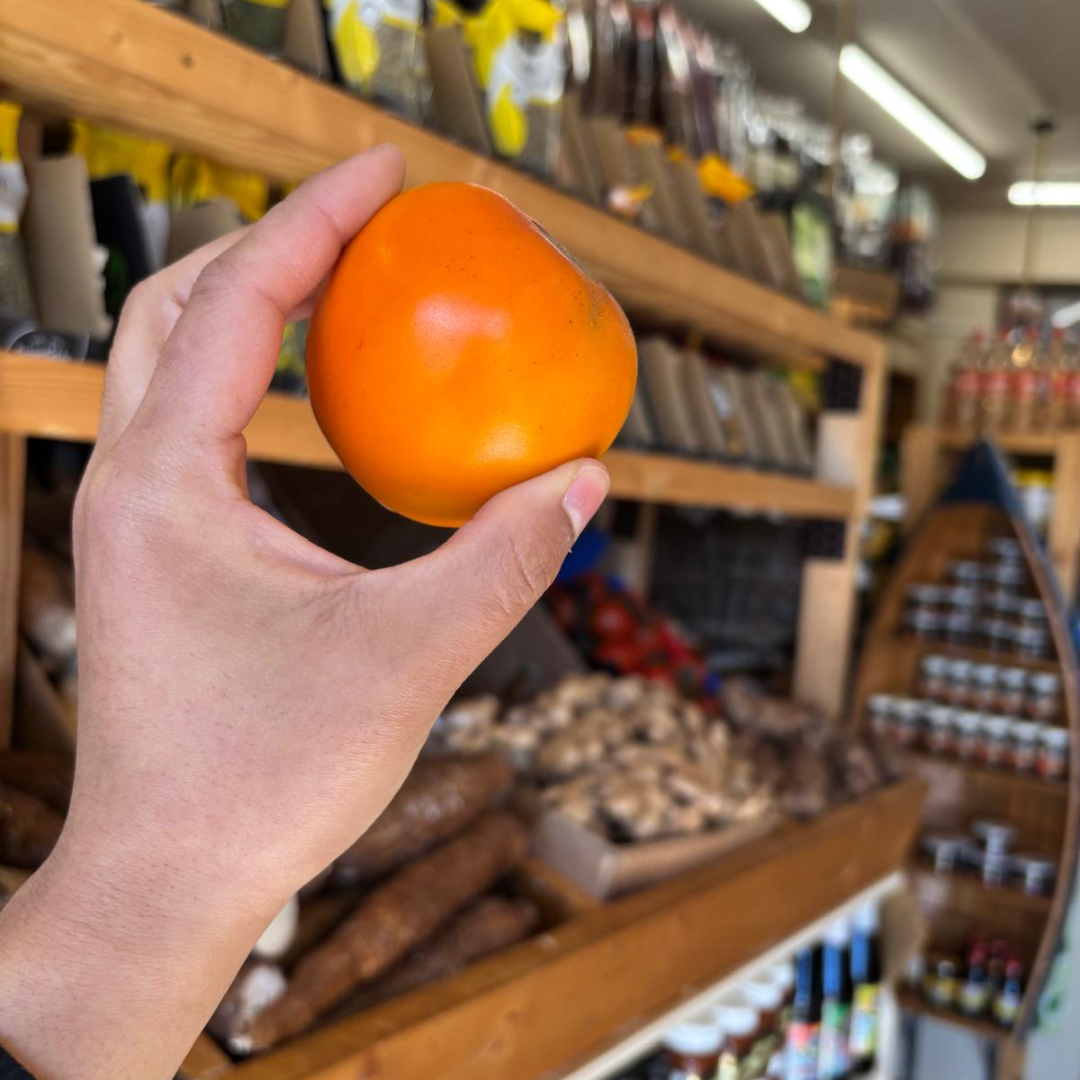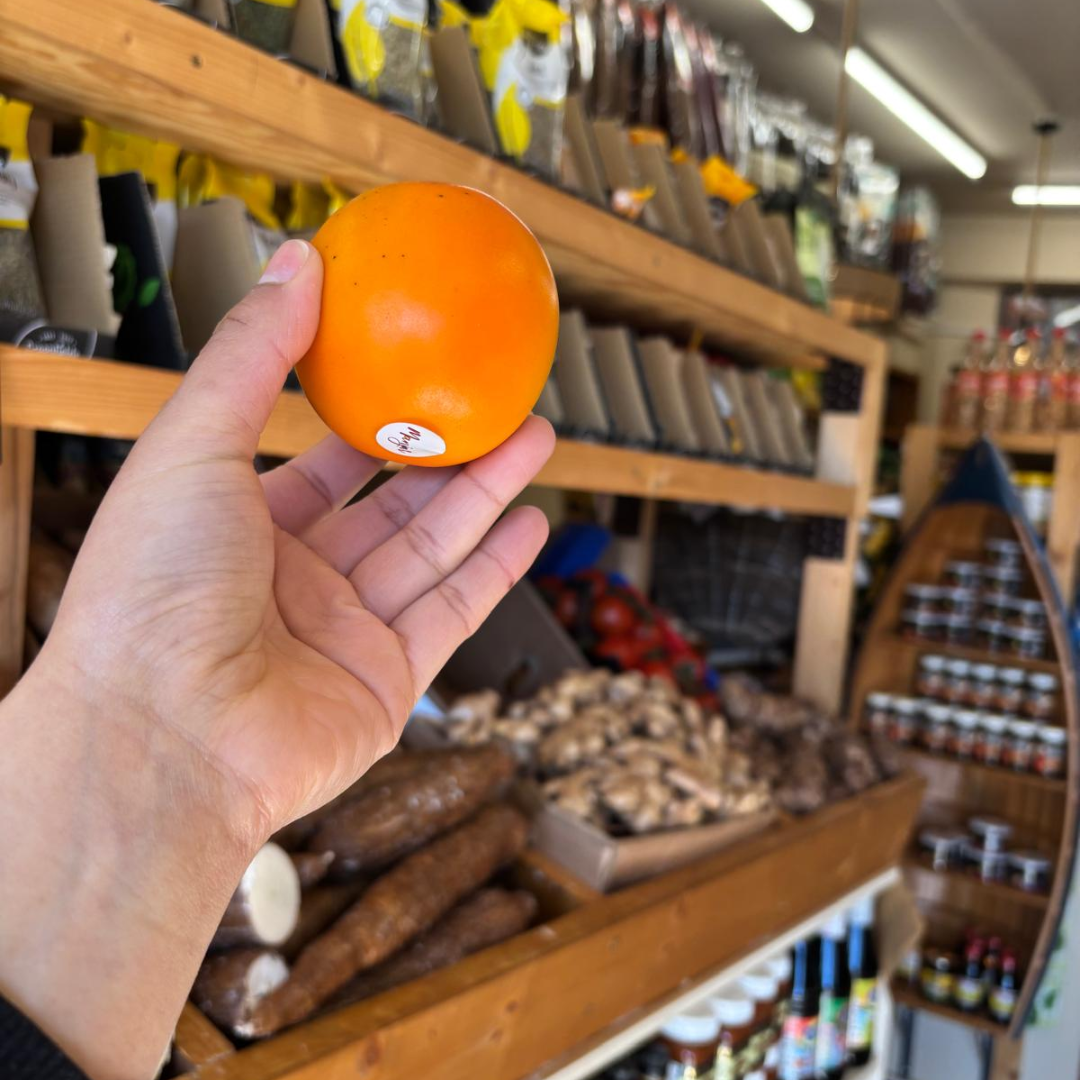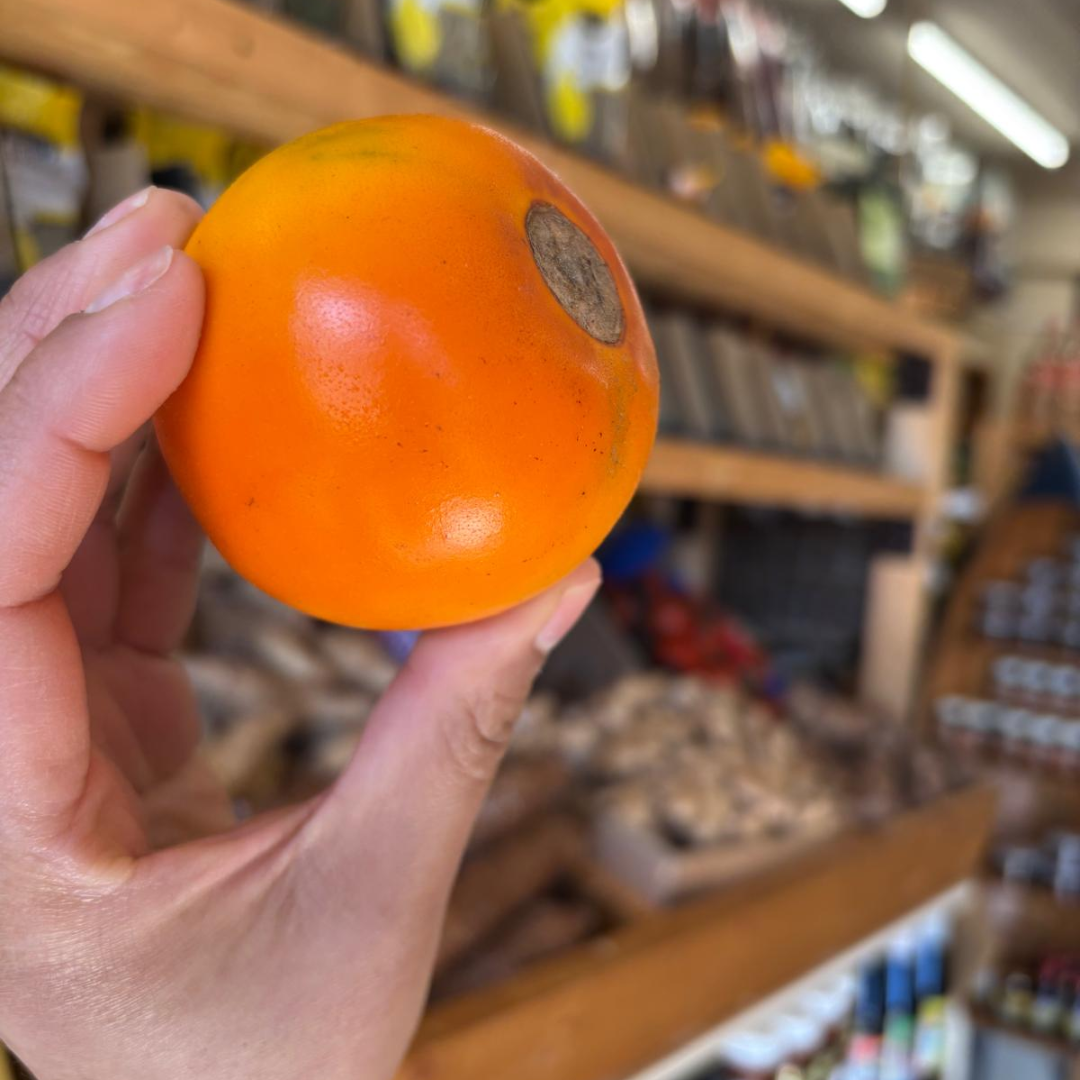Colombian Lulo (Naranjilla) (Single)
- Please note that Fruits will come in a variation of sizes, weights and colours.
-
You'll receive 1 per order of this item
- What is picked and packed is purely based on availability at that time
- We aim to send these fruits on the unripe side so they have more time to ripen. If unripe fruits are not available, it is likely riper fruits with enough time to travel and consume will arrive (ready or close to ready to eat).
Imported from Columbia
Lulo are a must-try for all exotic fruit lovers! You should not eat the skin of a lulo (also known as naranjilla); it is thick, tough, and inedible, and the juicy pulp and seeds are what are consumed.
Small in size and round in shape, in appearance, lulo somewhat resemble small oranges. Indeed, lulo are also known as 'naranjilla', the Spanish term for 'little orange'. Their thick orange skin is delicate (these fruits are easily bruised), smooth, and leathery to the touch.
Yet, whilst on the outside lulo look like oranges, on the inside, they bear a resemblance to tomatoes. The green, jelly-like flesh is separated into 4 sections and has small, pale yellow seeds. The flesh has a rich aroma, with distinctly sour notes and a flavour that delights the tastebuds: it has a notably citrus taste, sometimes described as a spectacular combination of rhubarb, pineapple, kiwi and lime!
The fruits are best enjoyed when eaten fresh out of hand: simply cut the lulo in half, add some salt, squeeze out the pulp and discard the rinds, then devour! However, their sweet-sour taste means they are also ideal for a range of culinary applications. They are commonly used to make refreshing juice and delectable jams, jellies, and sauces. You can use lulo pulp as a filling in baked goods and to make delicious lulo ice cream, sherbet, or sorbet, each of which is perfect for anyone with a sweet tooth! The pulp even works well in savoury meat stews!
As well as being supremely delectable, lulo boasts numerous nutritional benefits. In particular, they are a good source of dietary fibre and vitamins C, A, and K.
Lulo are quite perishable so must be refrigerated to keep fresh. Eat within a few days.
Description/Taste
The skin is also leathery, tough, and inedible, either smooth or covered in brittle hairs. These hairs are typically brown and can be removed from the skin, but care should be taken to wear gloves as these hairs may irritate sensitive skin. Lulo fruits ripen from green to a bright orange-yellow, and the skin is easily bruised or damaged. Underneath the surface, a pale orange membrane encases four chambers with a gelatinous, aqueous, jelly-like pulp. The pulp is filled with translucent yellow-green juice and small, flat, pale-yellow seeds, giving the mixture a slippery, slightly crunchy consistency. Lulo fruits are only consumed ripe, and mature fruits have a soft give when gently squeezed. The fruits will also have a bright golden orange hue and should be even in color with an aromatic quality. Ripe Lulo fruits have a sweet, acidic, and sour taste with tangy and refreshing tropical kiwi, lime, and citrus notes. The fruits also have a subtly rhubarb-like nuance, and the flavor will vary depending on the region and climate the fruit is grown in. When cooked, Lulo fruits develop a mellower, sweet, and less tangy taste.
Applications
Lulo has a sweet and sour, tropical, tangy taste suited for fresh and cooked preparations. It is important to note that only the juicy pulp and seeds are edible, and the membranes and the thick skin should be discarded. The fruits can be sliced in half, and the flesh scooped with a spoon, or the pulp and seeds can be squeezed from the skin directly into the mouth. Lulo fruits are sometimes salted or sprinkled with sugar for enhanced flavoring or used as a fresh topping over yogurt and fruit salads. In Ecuador, Lulo is popularly used to make sorbets, sherbets, ice cream, and popsicles. The pulp can also be incorporated as a filling for baked goods, pudding, and pastries or drizzled over cakes, pies, and cheesecakes. In addition to fresh preparations, Lulo can be simmered into jams, jellies, syrups, and hot sauces or added to savoury soups and stews.
In Colombia, Lulo fruits are primarily added to juices, smoothies, wines, and cocktails. Lulada is a traditional beverage comprised of Lulo, sugar, and water and is the most famous Lulo-infused beverage. Other drinks include champus, a beverage of corn, pineapple, and Lulo. Lulo pairs well with other fruits such as oranges, limes, pineapples, and bananas, herbs such as cilantro and mint, meats including pork and chicken, brown sugar, condensed milk, and spices such as cloves and cinnamon. Unripe Lulos can be stored at room temperature for 3 to 8 days or in the refrigerator for up to one month. Once ripe, the fruits should be immediately consumed for the best quality and flavour and will keep for 7 to 10 days when stored in a perforated plastic bag in the fridge. Lulo fruits can also be frozen for up to one year.
Have a question?
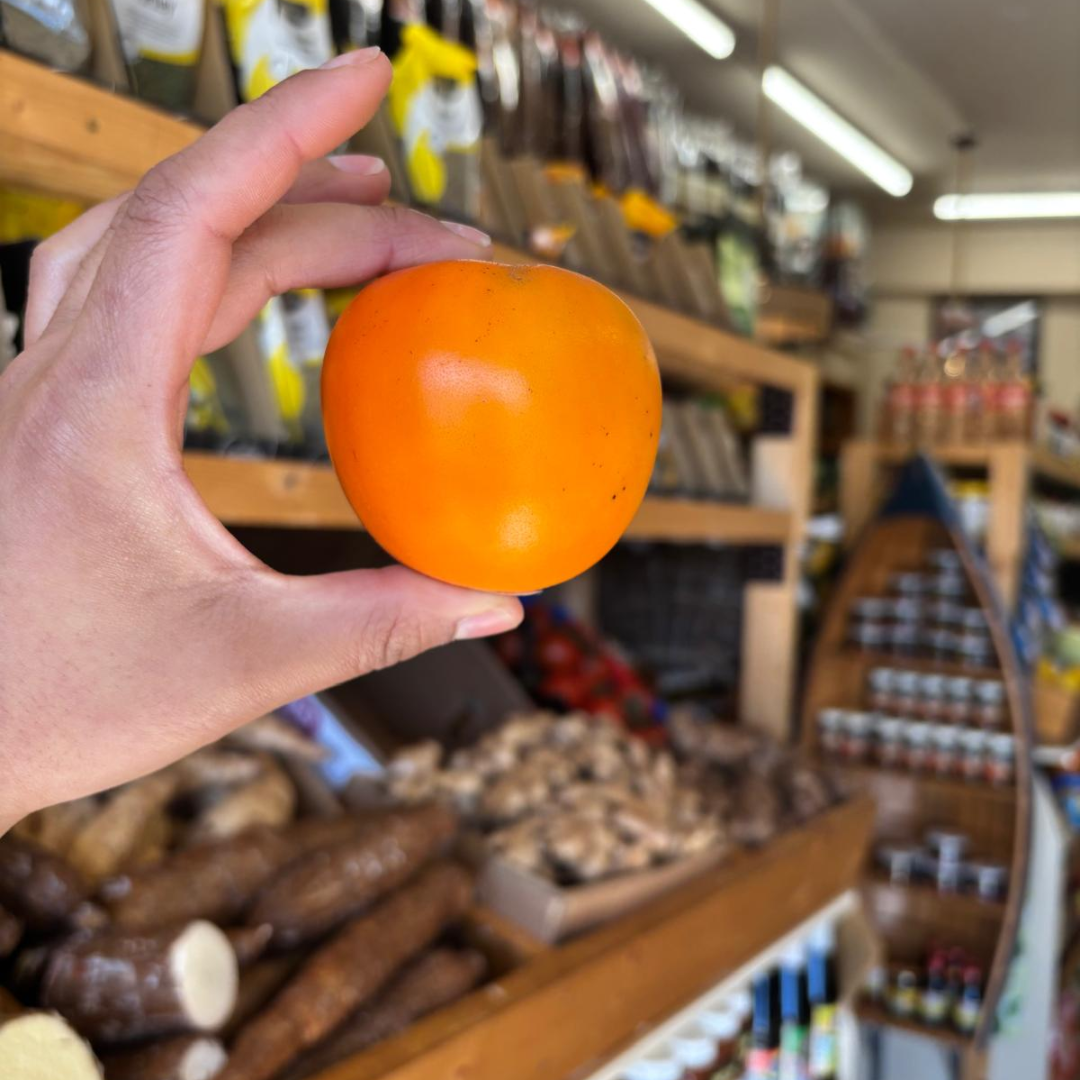
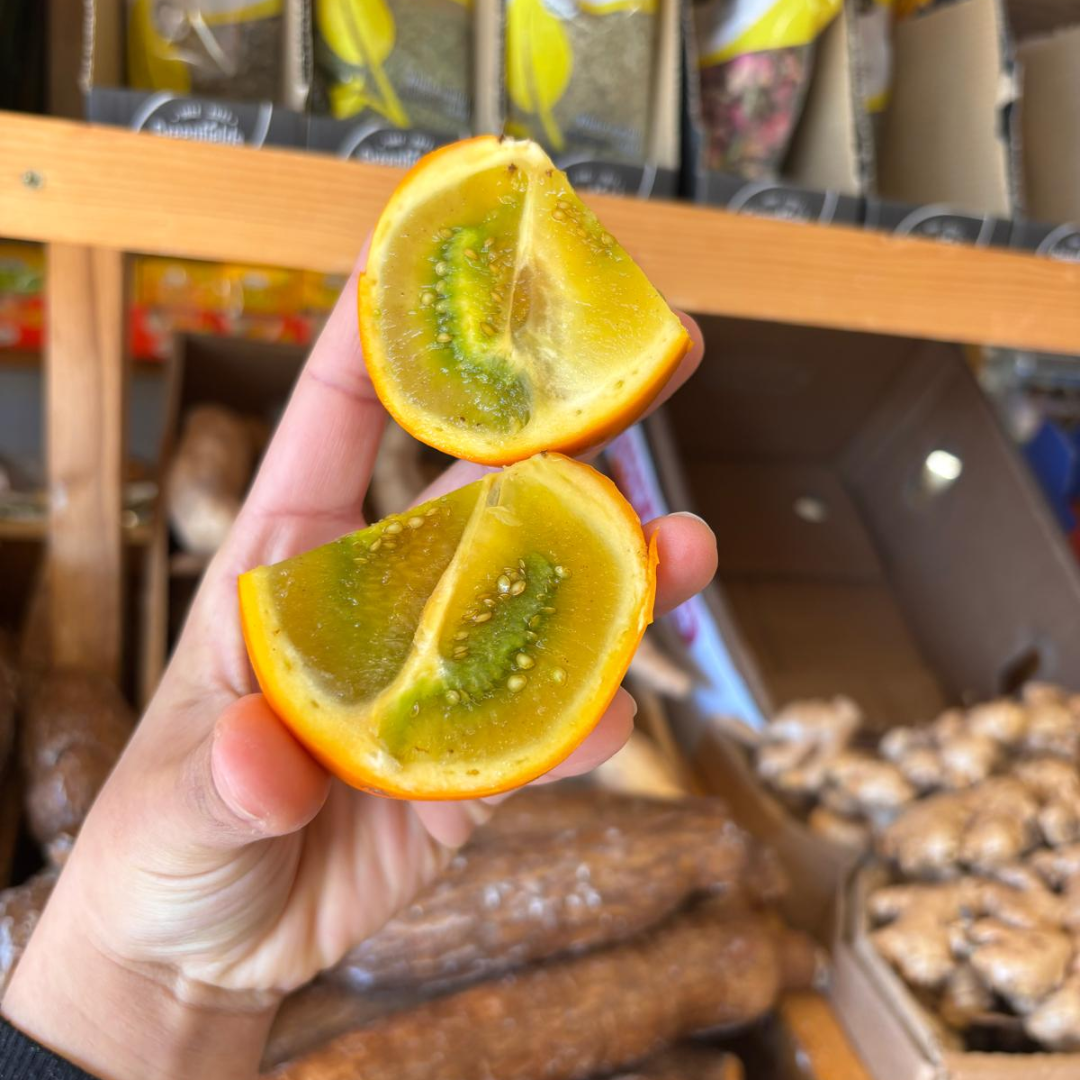
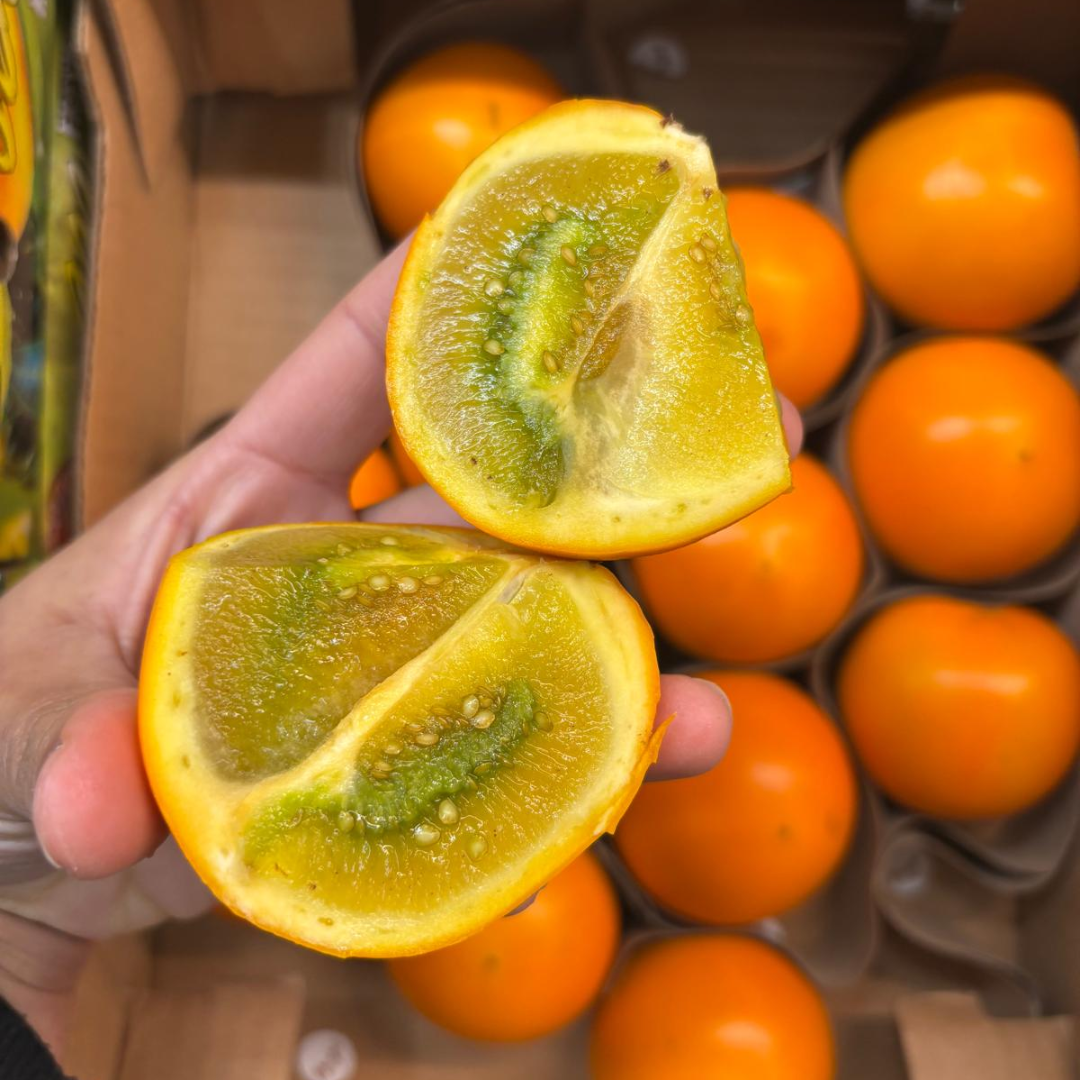
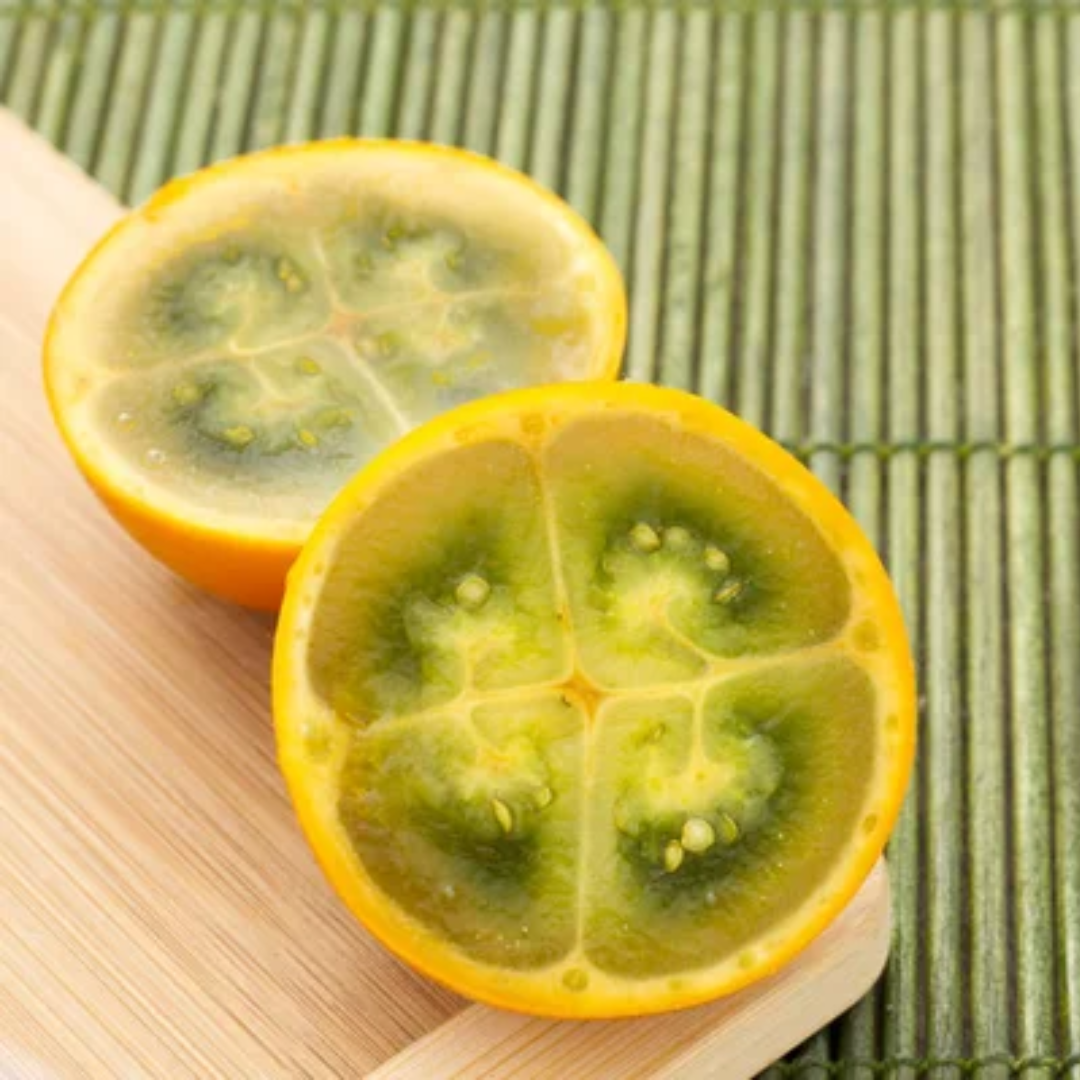
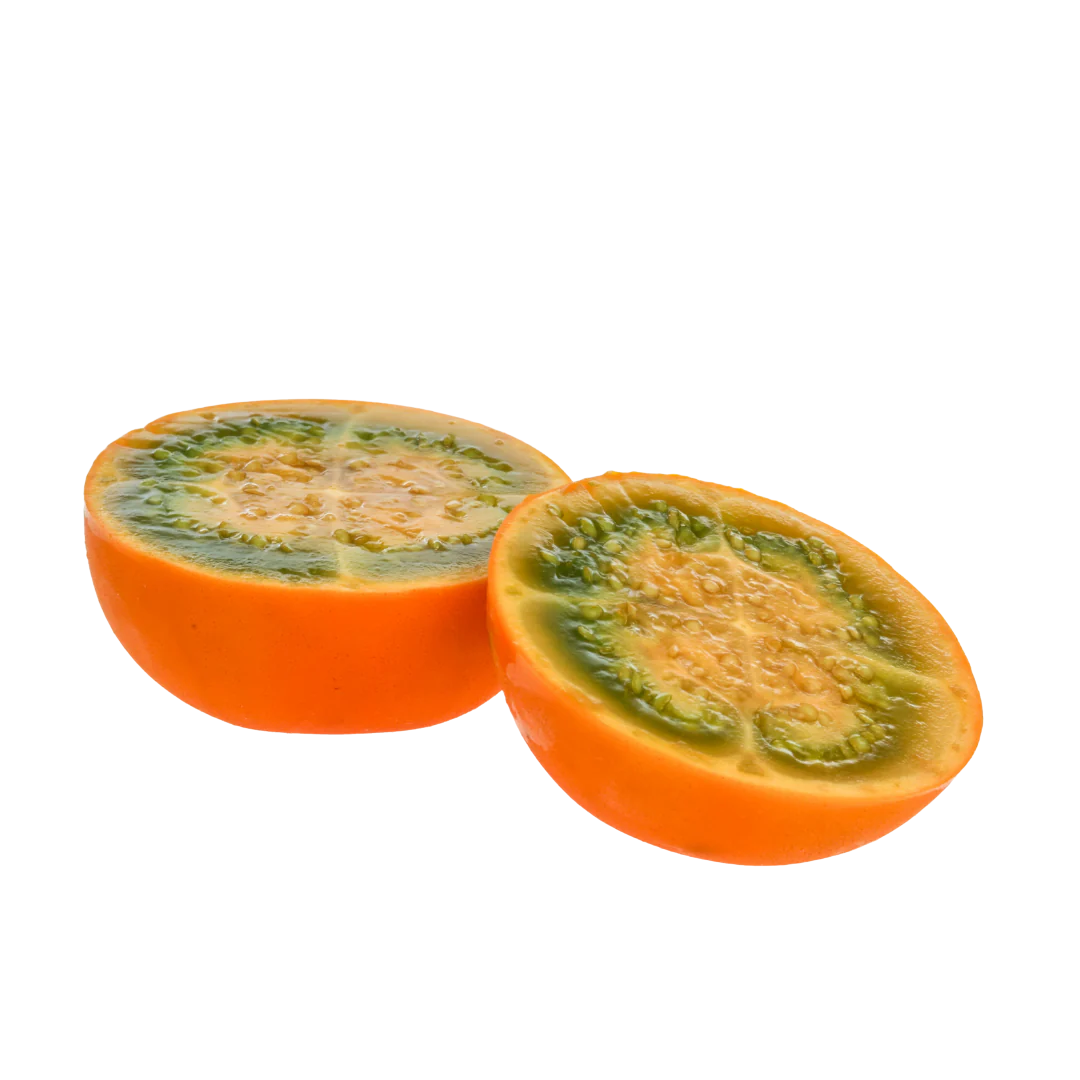
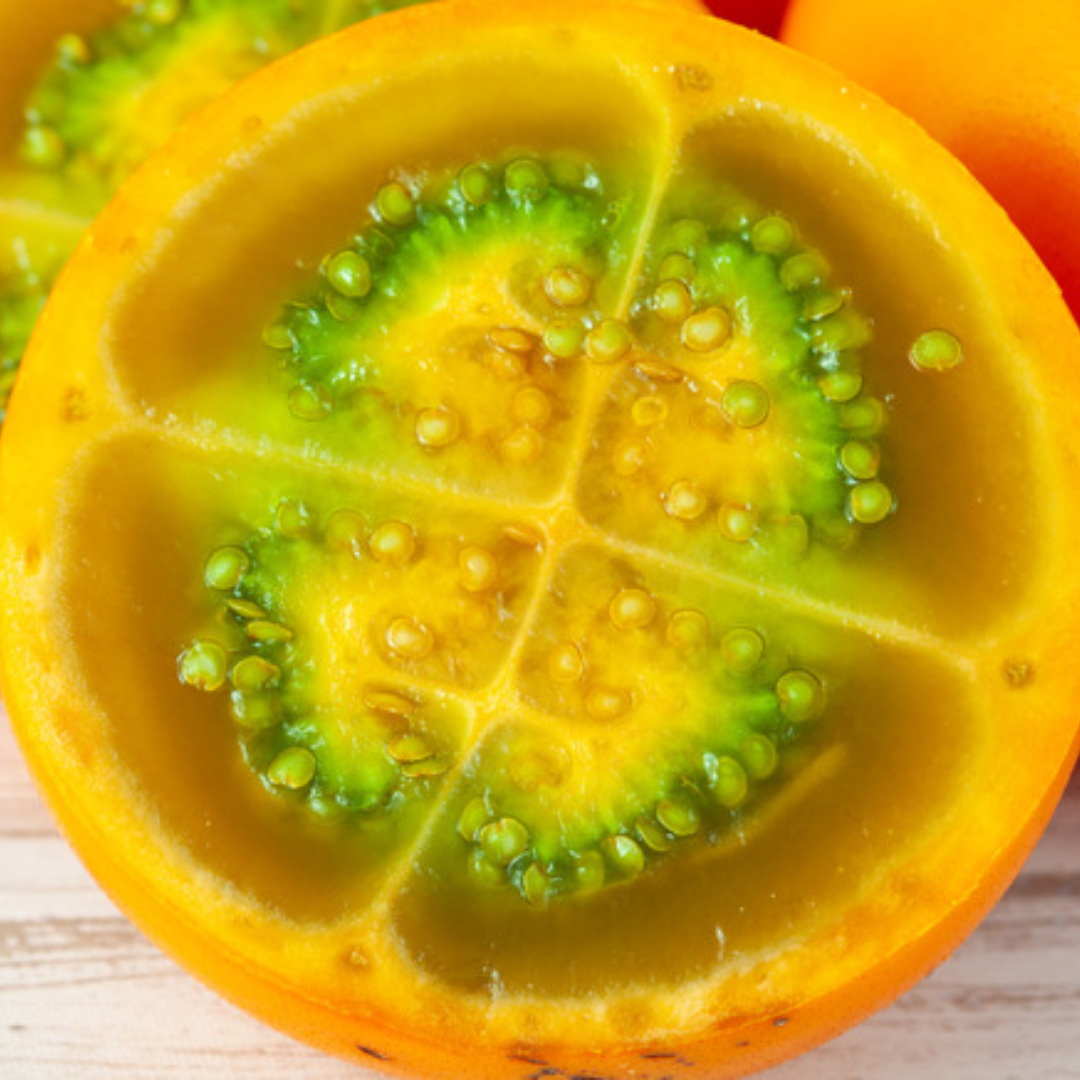
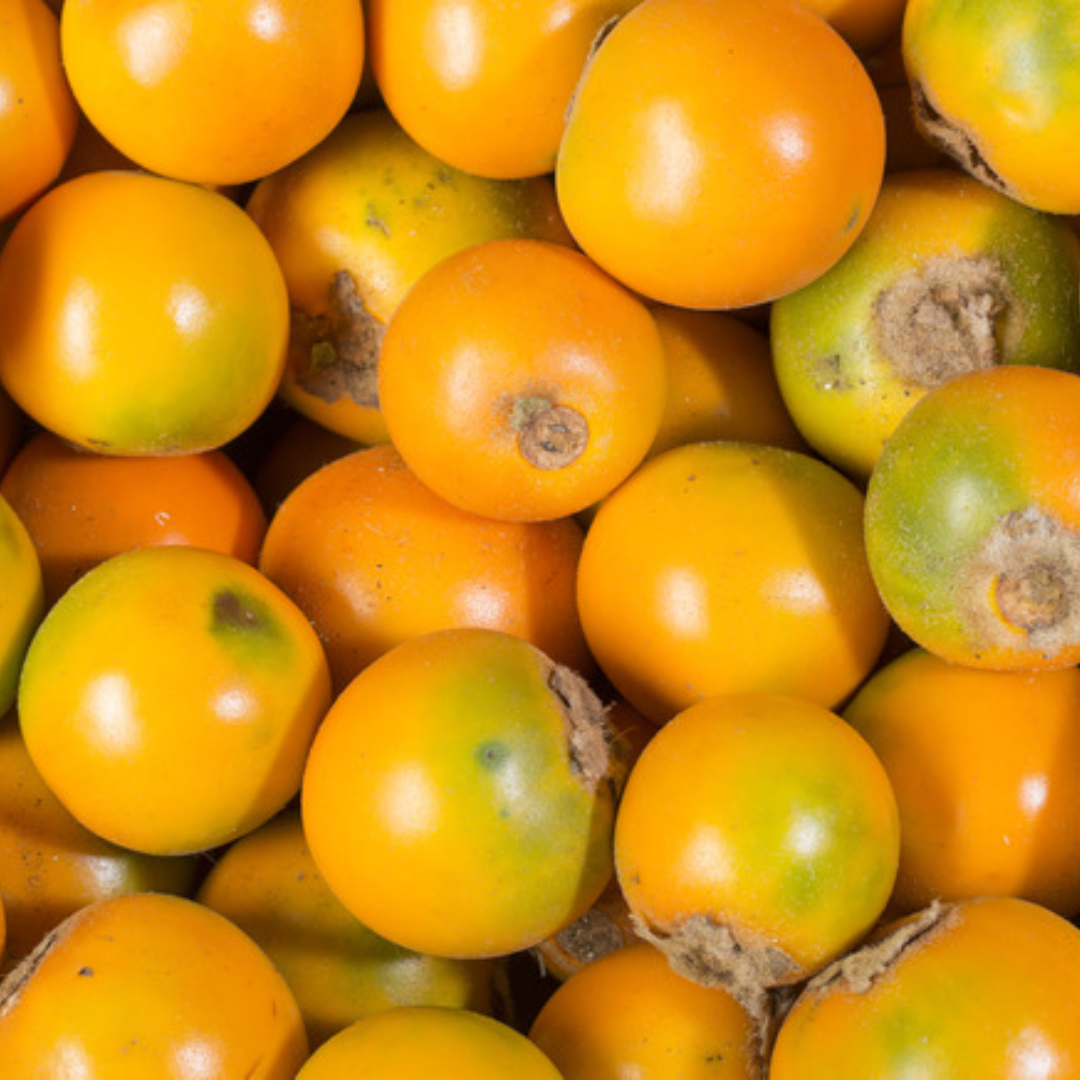
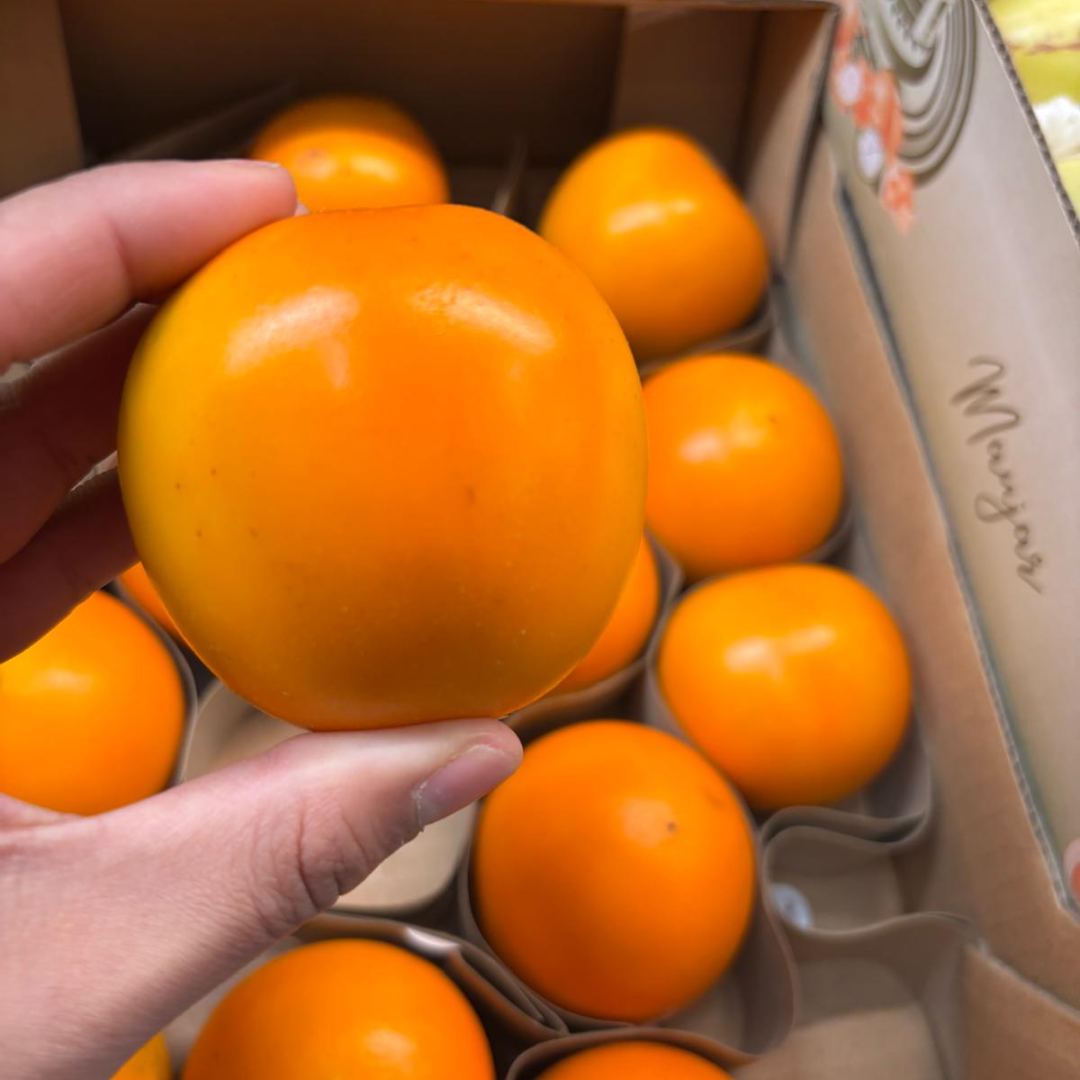
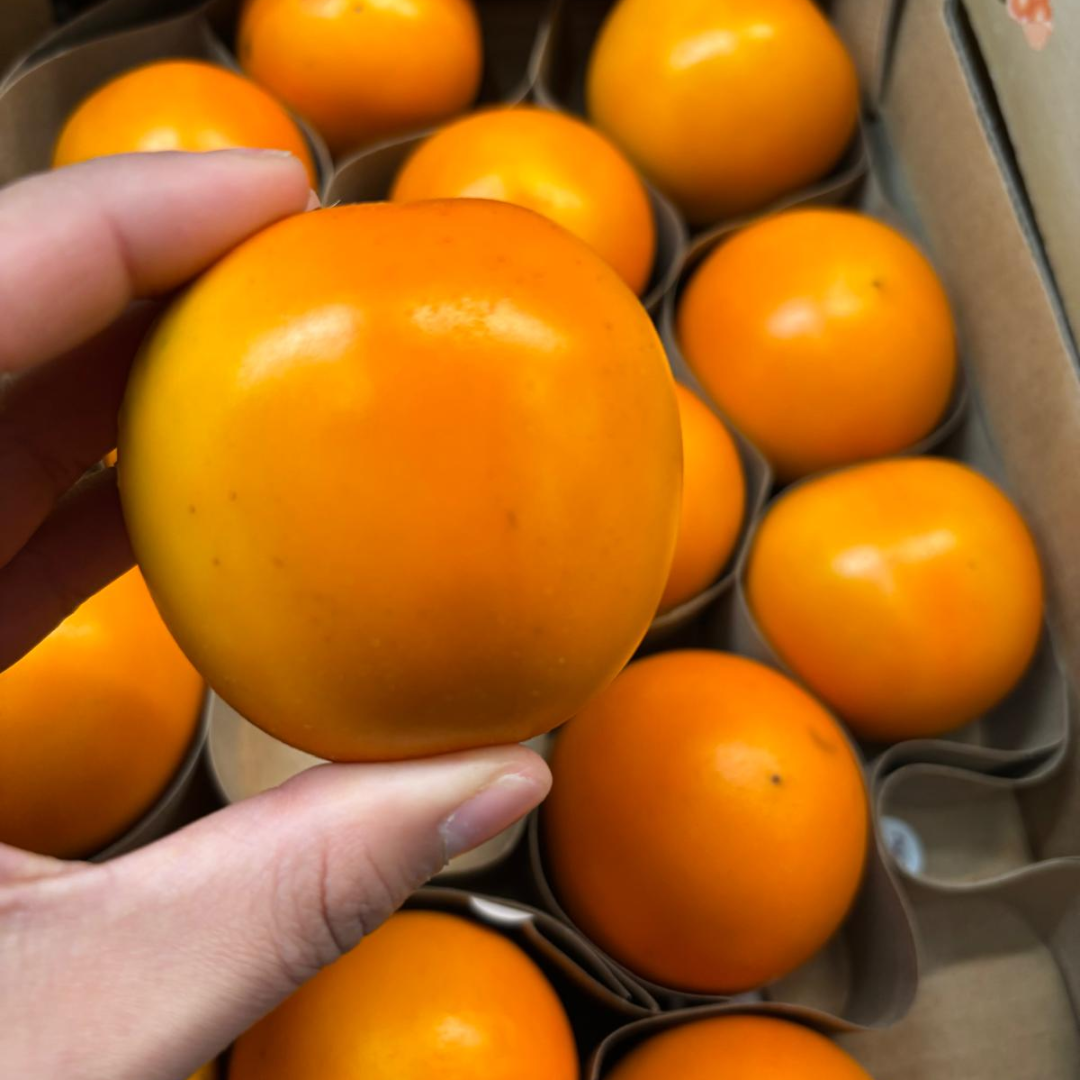
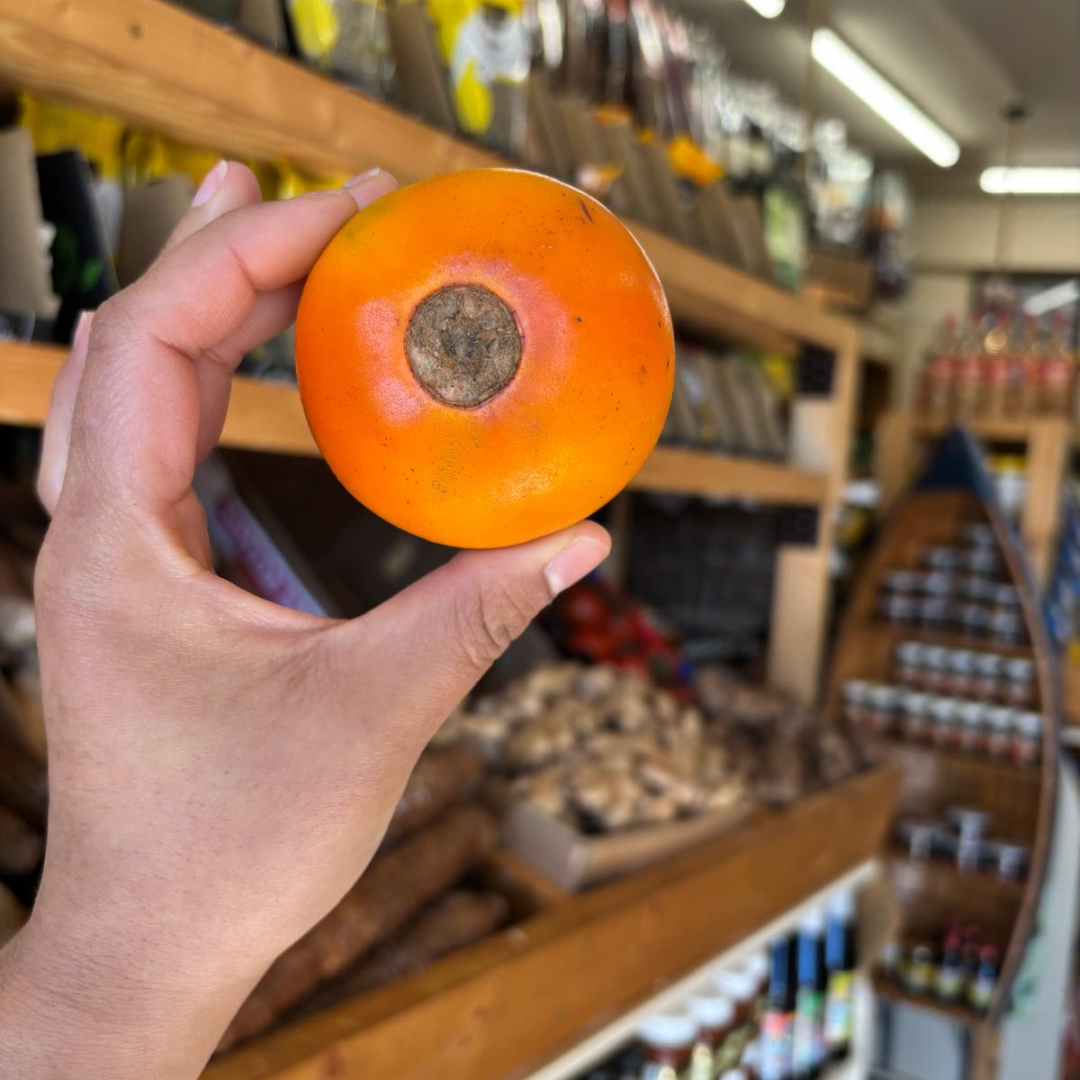

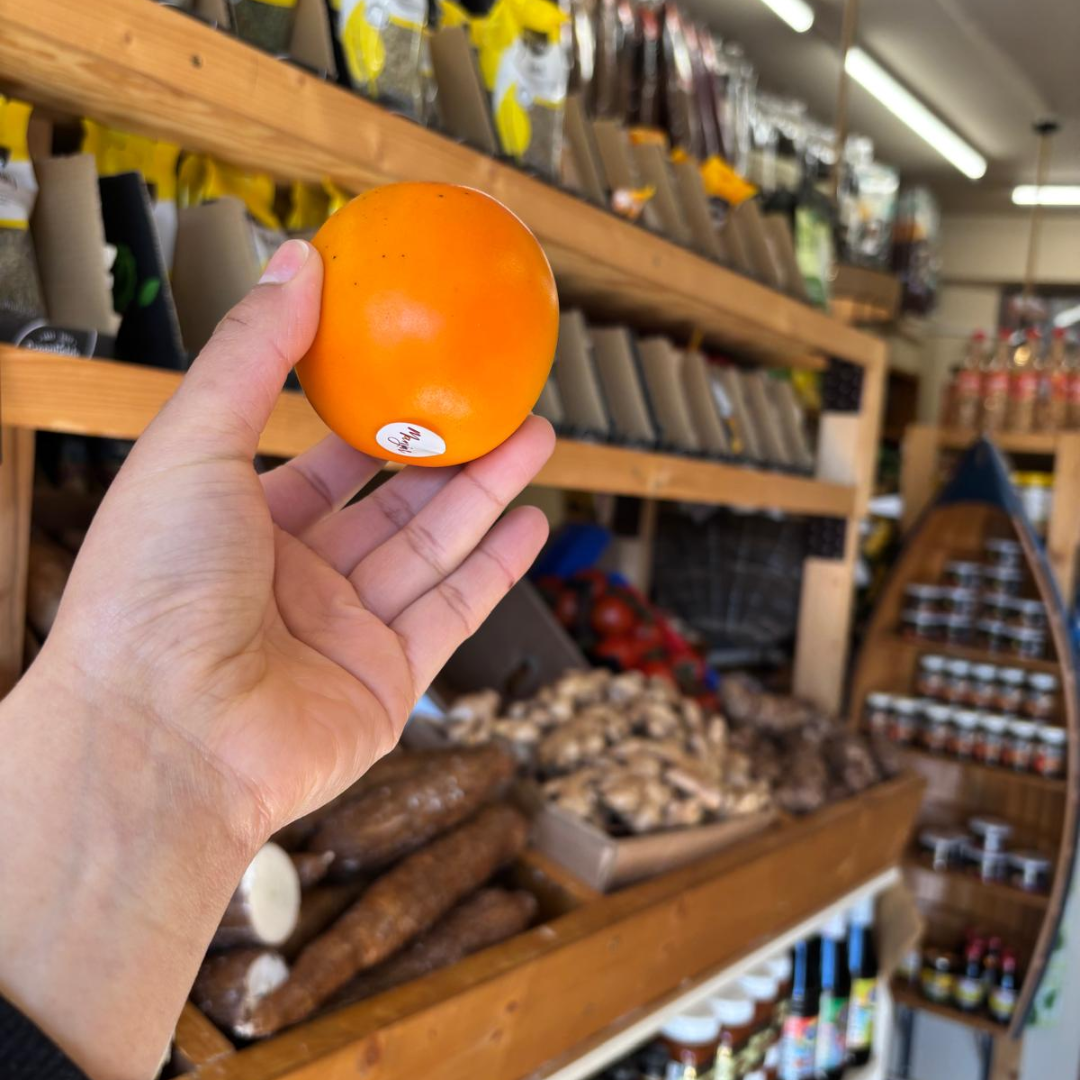
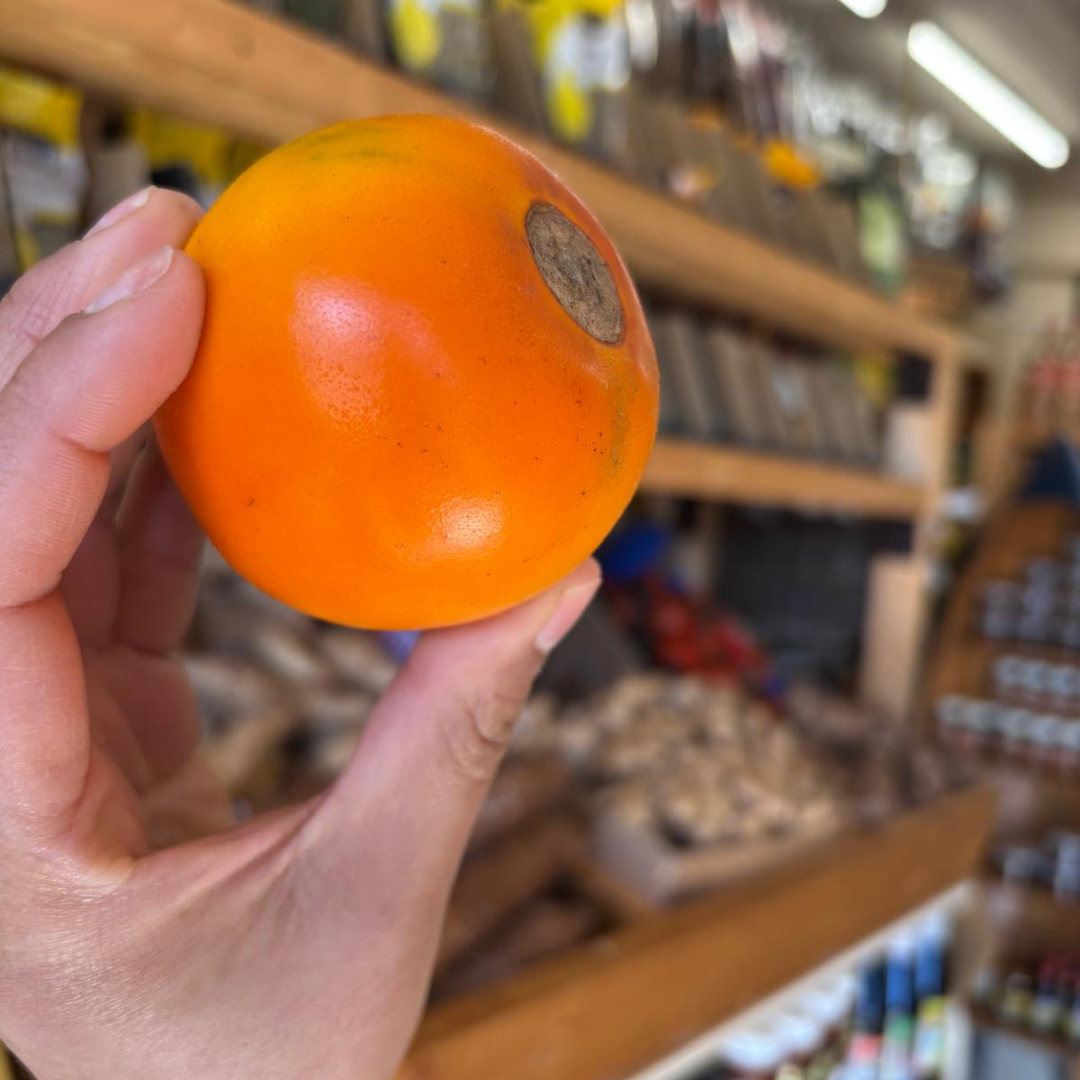
Colombian Lulo (Naranjilla) (Single)



